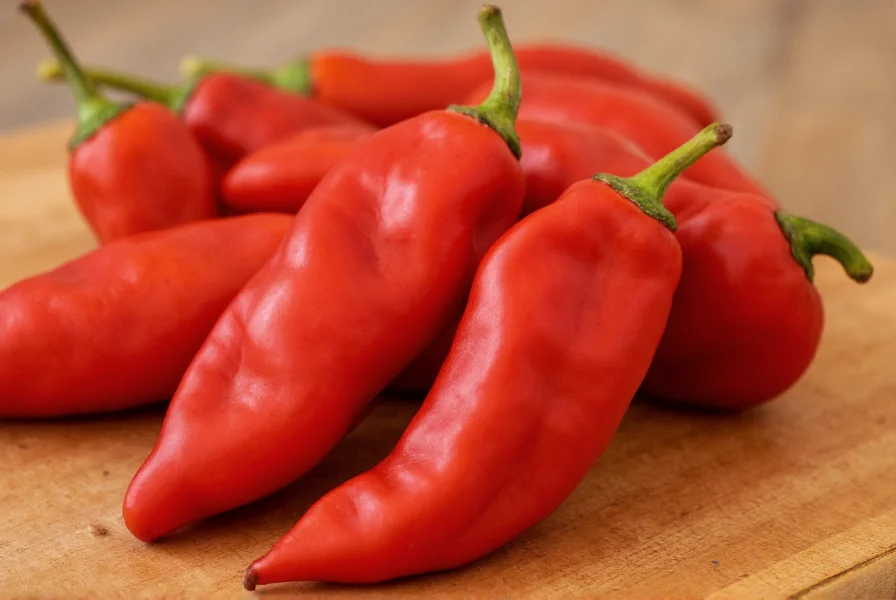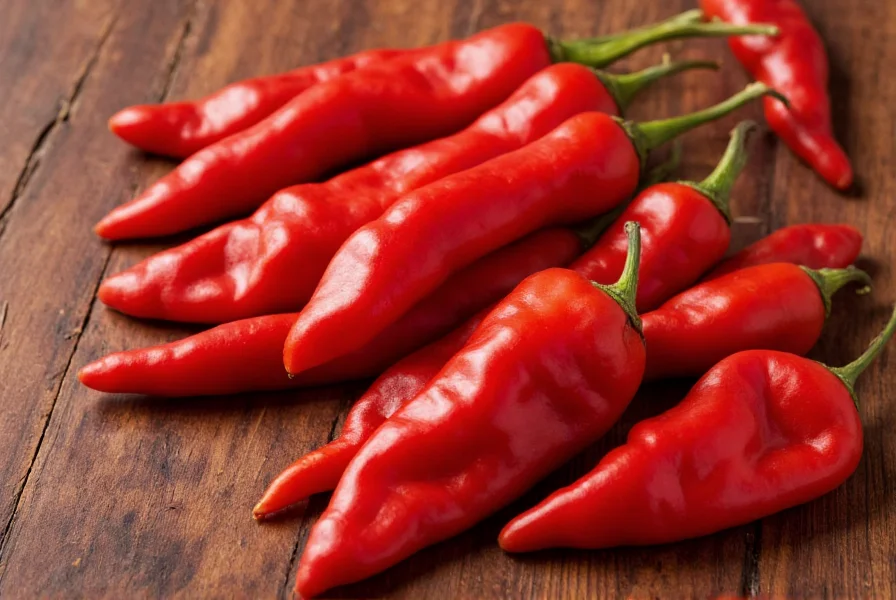A versatile member of the Capsicum annuum family, the red Fresno chili represents the mature stage of the green Fresno pepper. This guide explores everything you need to know about this popular culinary ingredient, from its distinctive characteristics to practical applications in your kitchen.
Physical Characteristics and Identification
Red Fresno chilies measure 2-3 inches in length with a conical shape that tapers to a blunt tip. As they mature from green to vibrant red, their skin develops characteristic wrinkled texture. The transition from green to red occurs when chlorophyll breaks down and carotenoids develop, signaling full ripeness and sweeter flavor.

Heat Level and Flavor Profile
With a Scoville heat rating between 2,500-10,000 units, red Fresnos sit comfortably in the medium-heat category. They offer a complex flavor profile that combines:
- Subtle sweetness (more pronounced than jalapeños)
- Fruity undertones
- Mild earthiness
- Gradual heat that builds slowly
| Pepper Variety | Scoville Units | Flavor Characteristics |
|---|---|---|
| Red Fresno Chili | 2,500-10,000 | Sweet, fruity, mild earthiness |
| Jalapeño | 2,500-8,000 | Grassy, bright, sharper heat |
| Serrano | 10,000-23,000 | Grassy, citrusy, intense heat |
Red Fresno Chili vs Jalapeño: Key Differences
While often confused, red Fresnos and jalapeños have distinct characteristics. The red fresno chili vs jalapeno comparison reveals:
- Shape: Fresnos have a more tapered, pointy tip compared to jalapeños' rounded shoulders
- Texture: Fresnos develop more wrinkles as they ripen
- Flavor: Red Fresnos offer sweeter, fruitier notes while jalapeños maintain grassier characteristics
- Heat progression: Fresno heat builds gradually versus jalapeño's sharper initial punch
Culinary Applications and Best Uses
The red fresno chili cooking uses span numerous culinary applications thanks to its balanced heat and flavor:
- Salsas and sauces: Provides depth without overwhelming heat
- Stuffed peppers: Holds shape well when hollowed
- Garnishes: Adds color and mild heat to finished dishes
- Pickling: Maintains texture and develops complex flavors
- Infused oils: Imparts subtle heat and color
Chefs particularly value red Fresnos in dishes where you want visible red color without extreme heat. Their thicker walls make them excellent for roasting and peeling, unlike thinner-walled serranos.
Substitutes When Red Fresnos Are Unavailable
If you're searching for substitute for red fresno chili, consider these alternatives based on your specific needs:
- For heat and flavor: Red jalapeños (slightly less sweet) or serranos (hotter)
- For appearance: Red serranos (thinner walls) or cayenne peppers (much hotter)
- For milder option: Poblano peppers (significantly milder, different flavor)
When substituting, remember that green jalapeños won't provide the same sweetness as fully ripened red Fresnos. For the closest match in both color and flavor profile, seek out red jalapeños that have been allowed to fully ripen.
Growing and Sourcing Red Fresno Chilies
Understanding where to buy red fresno chilies depends on your location and season:
- Supermarkets: Most common in Western US grocery chains, especially during summer and fall
- Farmer's markets: Best source for locally grown, peak-season peppers
- Gardening: Relatively easy to grow in home gardens with 70-80 days to maturity

When selecting fresh peppers, look for firm specimens with smooth, unblemished skin. Avoid those with soft spots or wrinkles beyond their natural texture. The brightest red peppers typically offer the sweetest flavor as they've fully ripened on the vine.
Storage and Preservation Techniques
Maximize your red fresno chili shelf life with these methods:
- Refrigeration: Store in crisper drawer for 1-2 weeks
- Freezing: Roast, peel, and freeze in airtight containers for 6-8 months
- Drying: Creates concentrated flavor for powders or rehydration
- Pickling: Preserves texture and adds tangy dimension
For immediate use, bring refrigerated peppers to room temperature for 30 minutes before cooking to enhance their natural sweetness.
Frequently Asked Questions
How hot is a red Fresno chili compared to other common peppers?
Red Fresno chilies measure 2,500-10,000 Scoville heat units, placing them in the medium-heat category. They're generally milder than serranos (10,000-23,000 SHU) but slightly hotter than some jalapeños (2,500-8,000 SHU). The heat builds gradually rather than hitting immediately, making them more versatile in cooking applications where you want noticeable but not overwhelming heat.
Can I substitute green Fresno chilies for red ones in recipes?
Yes, but with flavor adjustments. Green Fresnos have a grassier, more vegetal flavor and slightly less sweetness than their red counterparts. When substituting, you may want to add a small amount of sugar or use a touch longer cooking time to develop sweetness. The heat level remains similar, but the flavor profile changes significantly. For dishes where color matters (like salsas), the substitution will also affect presentation.
What's the best way to handle red Fresno chilies without getting burned?
Wear gloves when handling, especially when cutting or seeding. Capsaicin, the compound that creates heat, transfers easily to skin and can cause irritation. If you don't have gloves, wash hands thoroughly with soap and cold water immediately after handling (hot water opens pores and increases absorption). Avoid touching your face, especially eyes, until hands are clean. For persistent burning, apply milk or yogurt to affected skin areas, as capsaicin dissolves in fats.
How do I know when red Fresno chilies are perfectly ripe for harvesting?
Red Fresno chilies reach peak ripeness when they transition from green to vibrant red with some natural wrinkling. They should feel firm but yield slightly to gentle pressure. The stem should detach easily with a slight twist. Avoid waiting until they become overly soft or develop dark spots. For the sweetest flavor, allow them to ripen fully on the plant rather than picking green ones to ripen off-vine, though they will continue to develop some sweetness after harvest.











 浙公网安备
33010002000092号
浙公网安备
33010002000092号 浙B2-20120091-4
浙B2-20120091-4